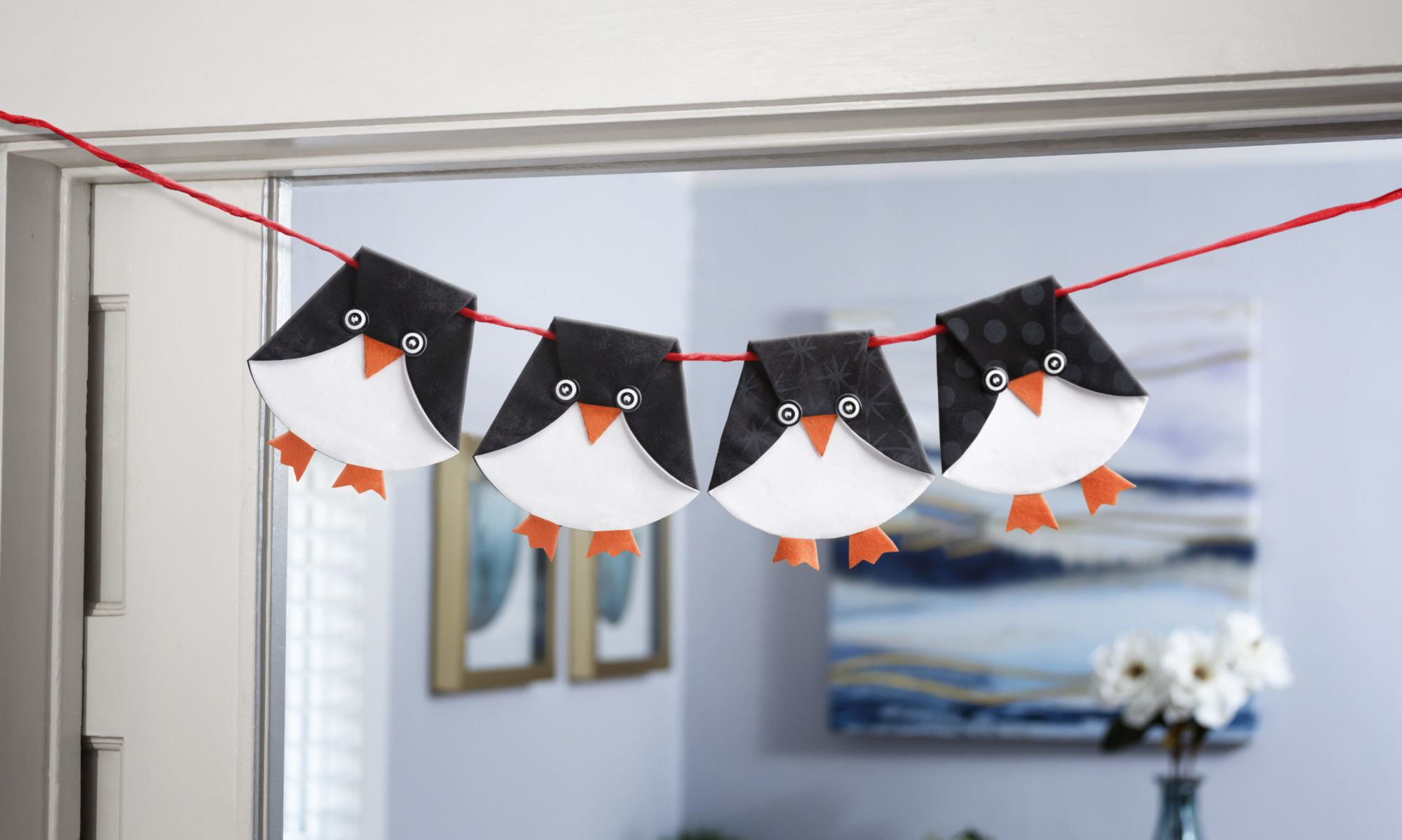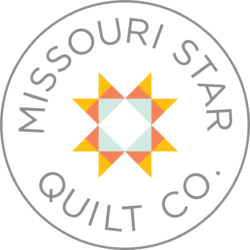Our newest Missouri Star Academy instructor is Patsy Thompson of Patsy Thompson Designs. She is an expert in free motion quilting using rulers. As you scroll through this post, you will find some of the most beautiful quilts quilted and designed by Patsy! Get to know her a bit more and fall in love with ruler-work quilting in her class, Beginning Free Motion Quilting with Rulers!
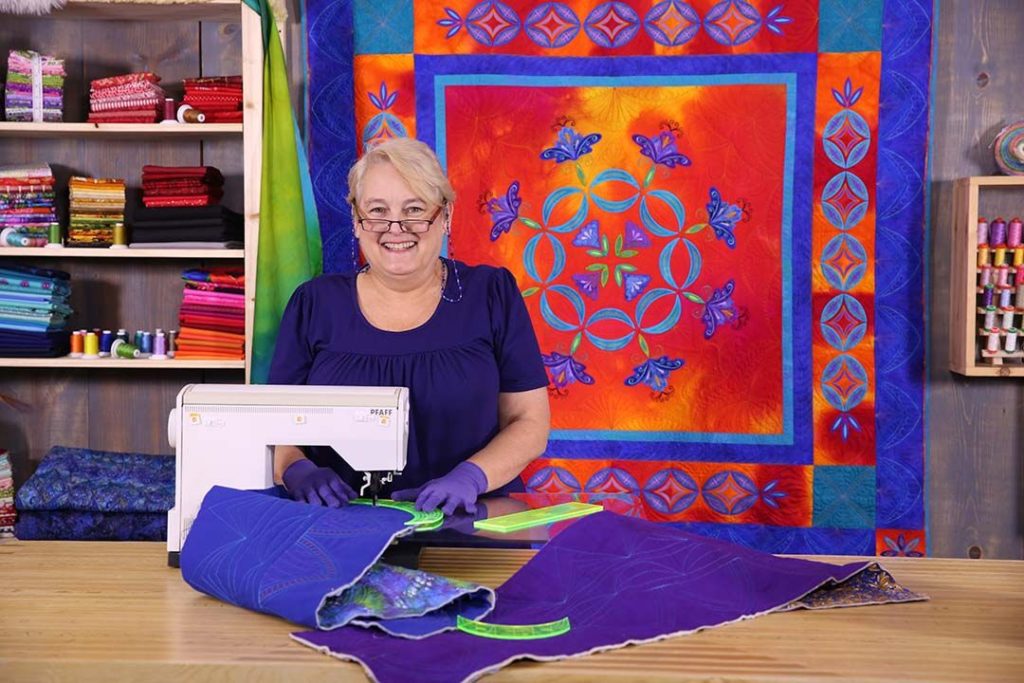
When did you first give machine quilting a try?
In the year 2000. I had been a hand quilter for over 20 years, and when I would see machine quilted quilts at shows, I thought of them as “cheater quilts.” I figured I could quickly learn to machine quilt, and I was so, SO WRONG!! It was very hard and took me a couple years of what felt like endless practice! I am very glad I didn’t give up, though, because I love to free motion quilt!
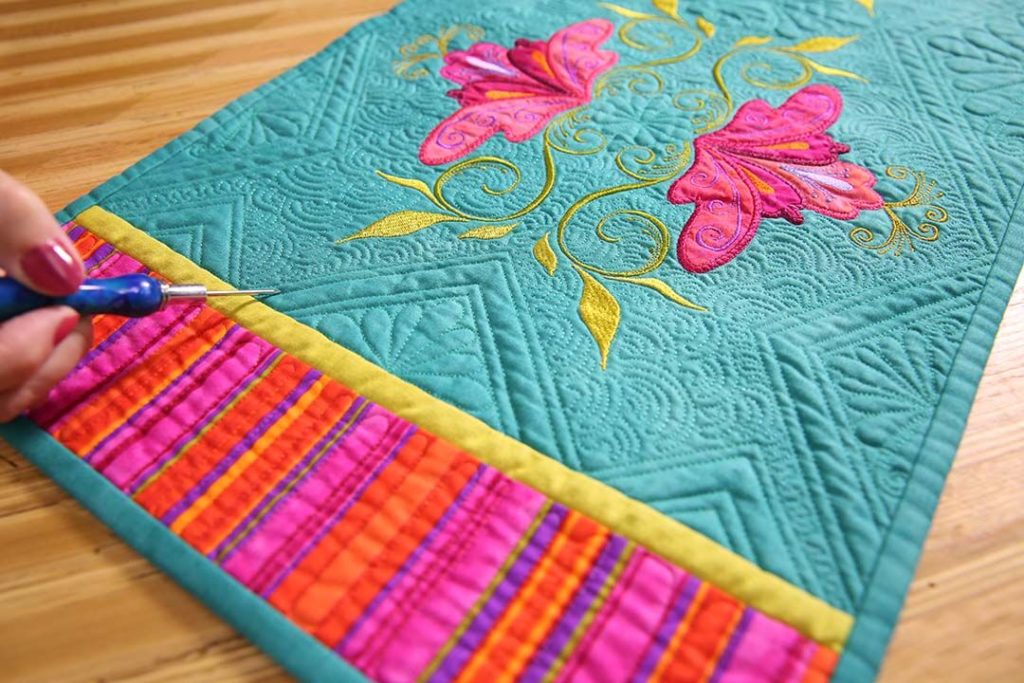
When you started, did you first use rulers or are they something you came to use later on?
Oh, gosh, no! I had been free motion quilting for many years before I tried rulers. Back when I did start, there were no ruler feet for home machines and we had to improvise. Nowadays, the market is very much geared to the home quilter and there’s a ruler foot for pretty much any machine that’s available.
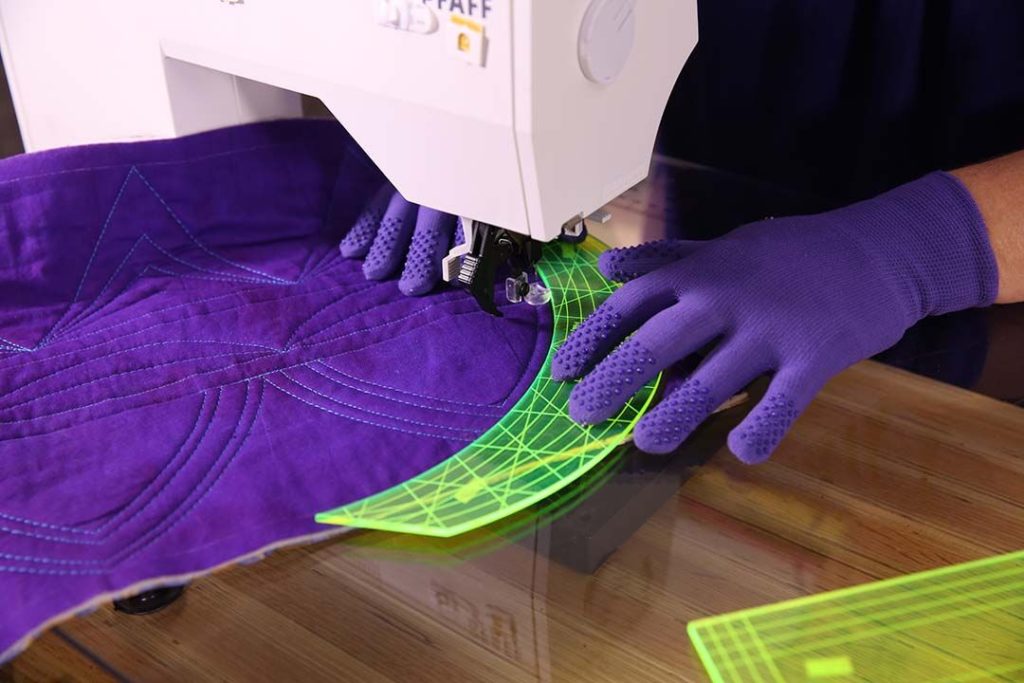
What advice do you have for someone just starting out with ruler work?
Get ready to have fun! It will feel very strange/awkward when you first start out, but stick with it and soon it will feel completely normal to be holding/moving the quilt and a ruler simultaneously. The learning curve for ruler work is much faster than for regular free motion quilting, so it’s worth giving ruler work a shot even if you’re a beginner free motion quilter.
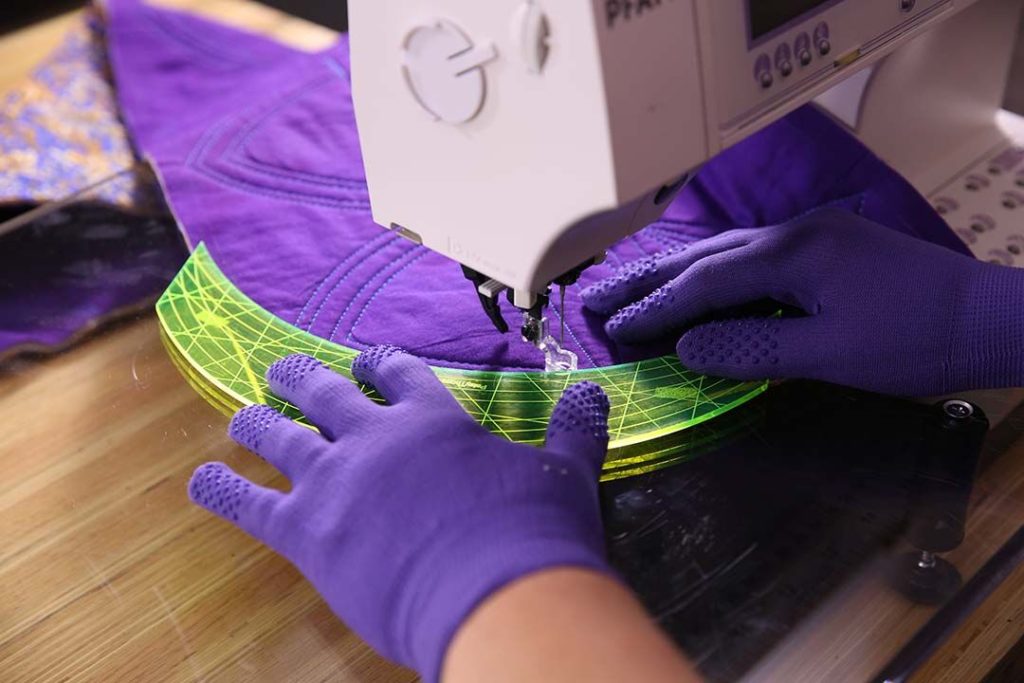
What advice do you have for someone who just started machine quilting?
I know that no one wants to hear these words, but keep practicing, then practice some more. It’s all about putting in the time. I would also start with much smaller projects. There are really two very different skills you need to free motion quilt:
- You need to learn how to control the quilt sandwich underneath the needle to create an appealing design. This requires you learning how to move the quilt from point A to point B to point C to create the design, and also how to do the “dance” between how quickly you move the quilt across the machine bed and how fast you run the foot pedal. This set of skills is best learned on small quilt sandwiches.
- You need to learn to handle the quilt from the standpoint of a mechanical engineer. A quilt is big and bulky and has a weightiness that will always be pulling against you until you learn how to position it to avoid drag. When you’re a sit-down quilter on a home sewing machine, you also have that small harp space to contend with. I don’t think about any of these issues anymore because it is second nature to me how to position/manipulate the quilt as I work, but when you’re first learning to free motion quilt, you’ll really need to focus on how to overcome these challenges.
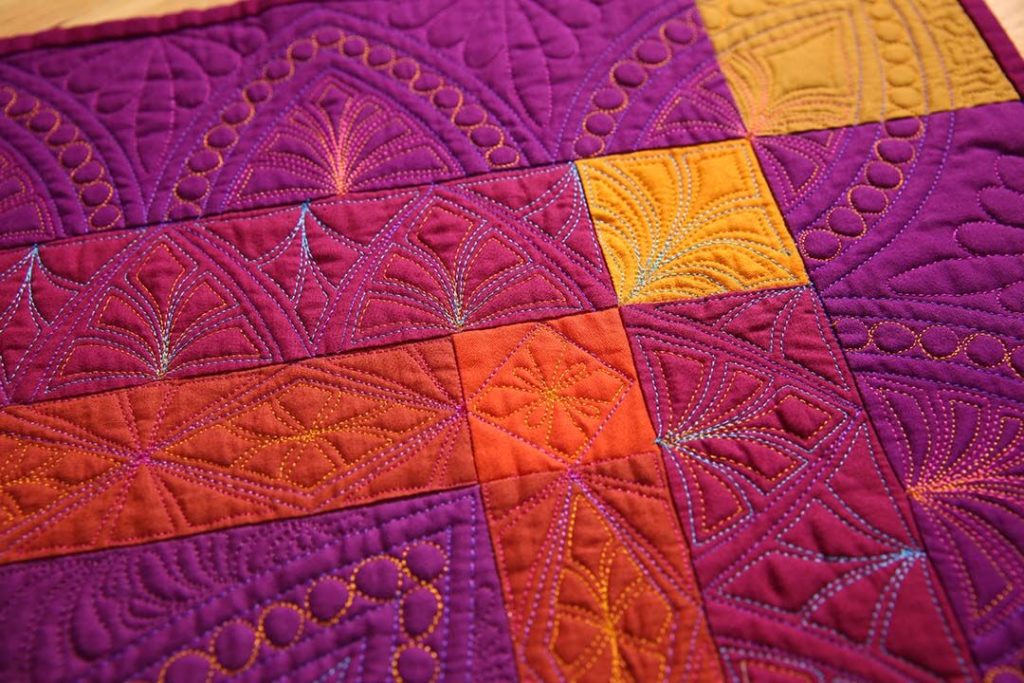
Do you have an all-time favorite quilt that you have quilted?
I have two all time favorites. Both of them have some hand-dyed cotton sateen fabrics in them, and there is something about those luscious colors that thrills me as I am quilting! They both have a lot of ruler work quilting, and also lots of feathers, so they each have many of my favorite parts of quilting.
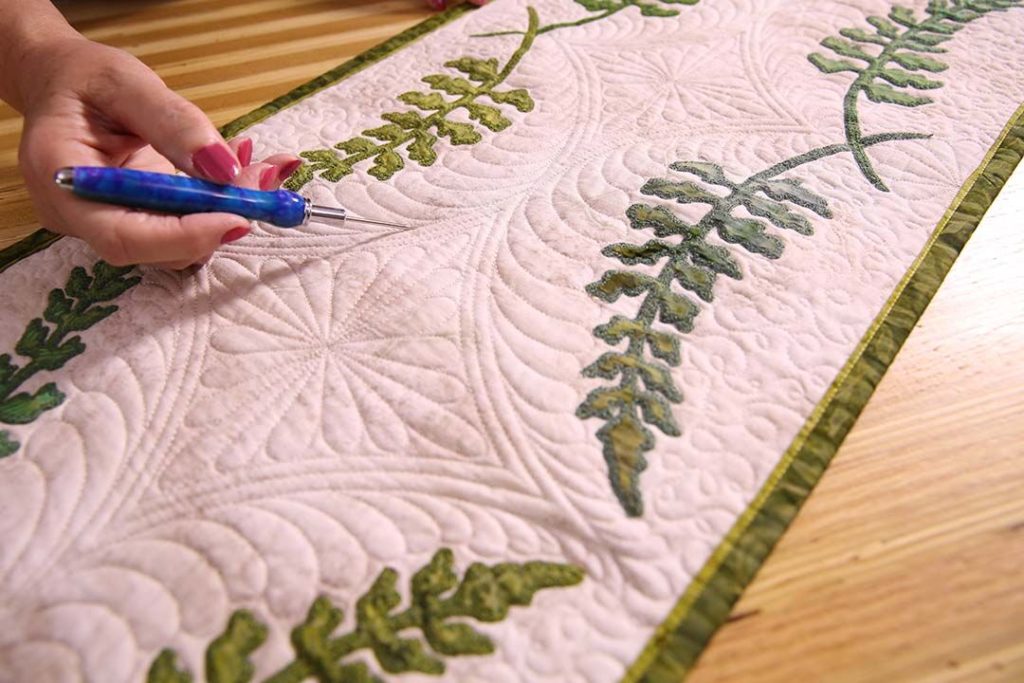
Where do you look for inspiration in your work?
Pretty much everywhere. I am very affected by color, especially rich, saturated colors, so I generally find myself stimulated by colors I see in everyday things. I also am aware of combinations of colors (i.e. colors next to one another) that I find pleasing. Those combinations will frequently find their way into quilts!
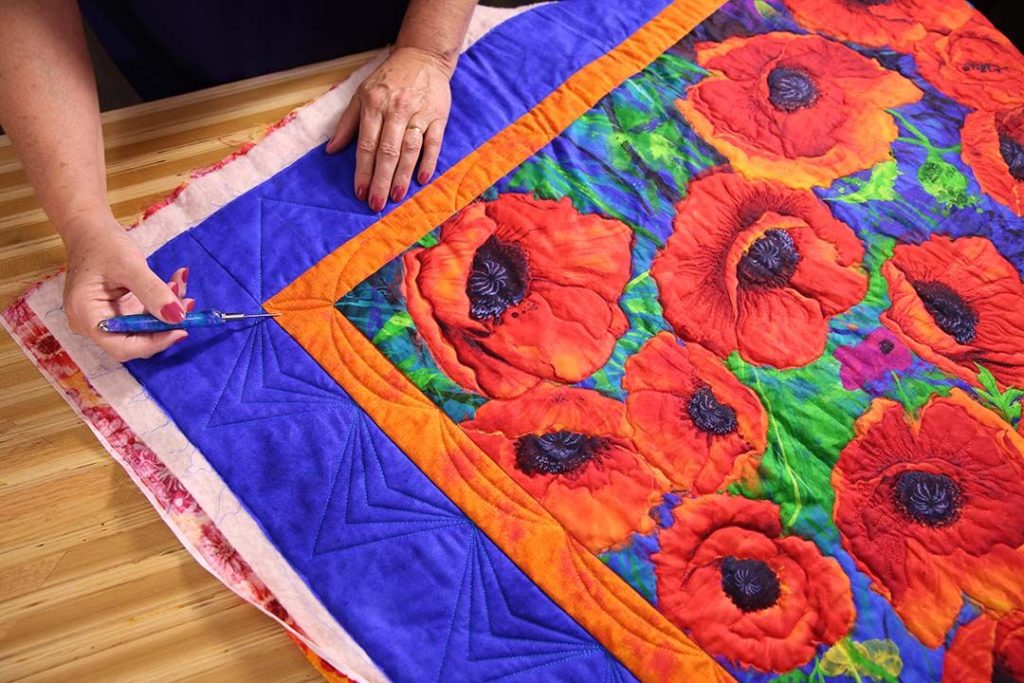
How long have you been teaching classes and what do you enjoy most about sharing your skills?
I taught my first class in early 2002. A friend of mine talked me into it and I remember being SO nervous driving to the class, questioning how I let myself get talked into doing it, wishing I could somehow get out of it. By the end of the class, I felt so exhilarated by seeing all these students learning how to free motion quilt, that I never questioned teaching again. The best part of teaching is seeing a student realize that he/she can “do it.” There is nothing like the thrill of being a part of that spark!
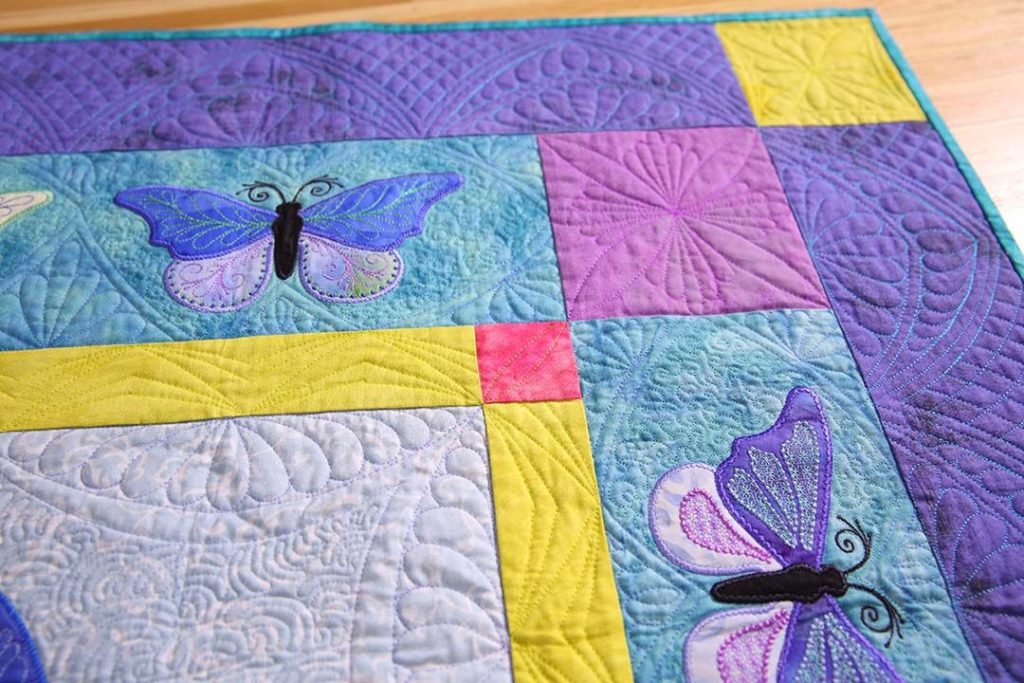
What are the must have tools for ruler work you always have on hand?
A ruler foot that fits your machine, machine quilting rulers/templates, and either a plexiglass extension table for your machine or the ability to sink the machine so it is flush with the quilting surface. You’ll also want marking tools (to mark your starting/stopping points), a seam ripper, and I like having a short ruler (6-8 inches long) for any measuring/marking that need to be done on the fly.
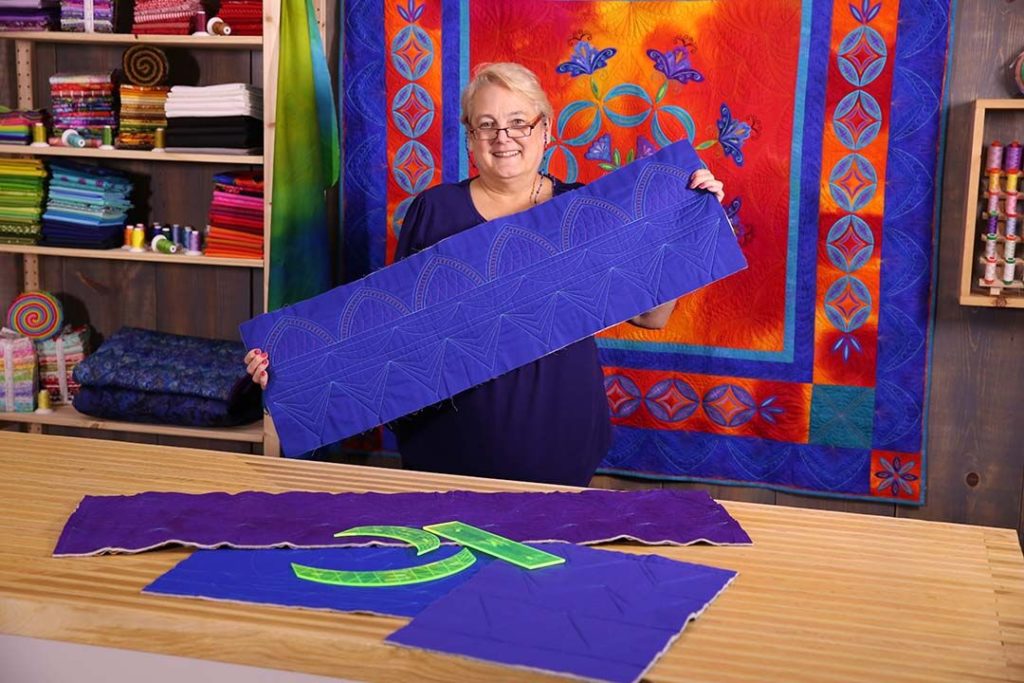
What is your favorite ruler to use/design to make when machine quilting?
Arc rulers, for sure! You can make so many different types of designs with arc rulers, and the more curves you have at your disposal, the better. Arcs RULE!!
START MACHINE QUILTING WITH RULERS
What is your favorite machine quilting design?
Show us in the comments!
